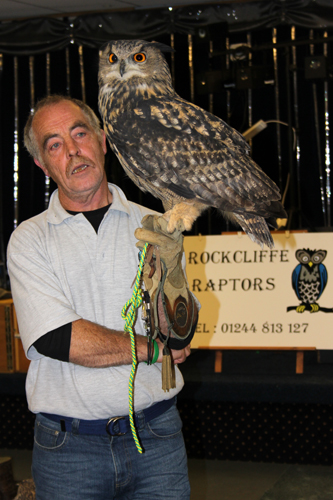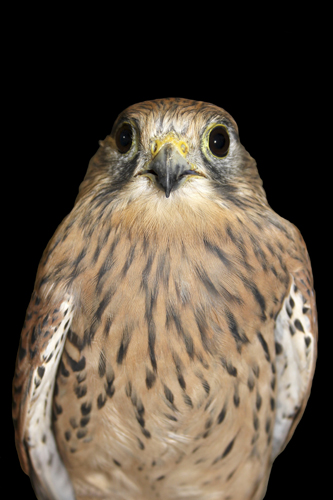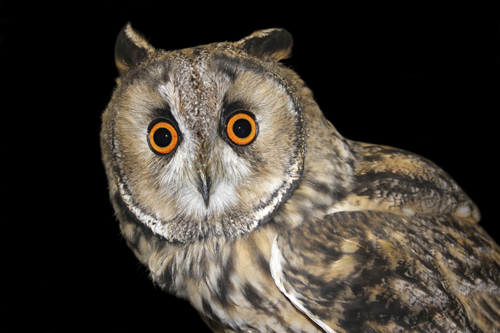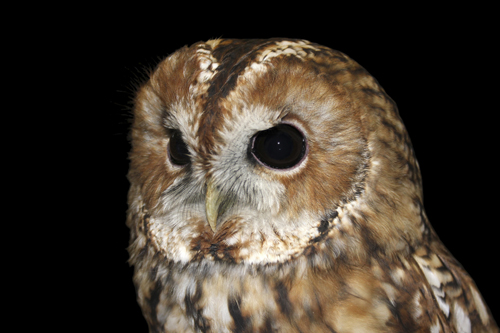Steve with Rocky the Eagle Owl
Steve and Marg Dewsnap from Rockcliffe Raptors, Flintshire, North Wales brought in a selection of European Raptors and Owls from their private collection. These included a Barn Owl Tyto alba called Koko, Tawny Owl Strix aluco called Tally, Long Eared Owl Asio otus called Otis, European Eagle Owl Bubo bubo called Rocky, European Kestrel Falco tinnunculus called Emma, Peregrine Falcon Falco peregrines called Flint and Common Buzzard Buteo buteo called Ziggy.
Emma the Kestrel
Otis the Long-eared Owl
Steve proceeded to give a really informative talk about the birds and observations from his ten years of keeping birds of prey.
Notable facts included:-
Owls have an acute sense of hearing that helps them locate and capture prey. The facial disc acts as a reflector, channelling sounds into the ears.
Owl’s eyes are large in order to see in low light conditions. Owls cannot move their eyes as they are not actually eye balls but elongated tubes. They are held in place by in the skull called Sclerotic rings. The Owl makes up for this by being able to turn its head up to 270 degrees left or right from the forward facing position.
The eye is lubricated by the nictitating membrane, a third concealed eyelid that sweeps horizontally across the eye like a windscreen wiper.
Rocky the Eagle Owl
Owls coat their pellets in saliva when regurgitating them this prevents heartburn and acid damage to the throat. Barn Owls saliva is black. If you feed the European Eagle Owl and the Barn Owl on the same diet of white rats the Eagle Owls pellet is white whereas the Barn Owls is coated in black.
The leading edges of an owls primary feathers have comb-like serrations. These decrease turbulence and thus the noise of air as it flows over the wing allowing them to fly silently.
Barn Owls have a serrated structure that runs along the inner talon edge of the third digit called a “pectinate claw”. This is generally thought to aid in preening.
Ko’ko the Barn Owl
It is a misnomer that during the characteristic courtship duet between Tawny Owls the male calls twit and the female ‘twoo.’ Shortly after moving to their Flintshire base Tally the male Tawny Owl began calling during the evenings which attracted wild Tawny Owls to the garden. Steve noted that one evening Tally would call twit and the wild Tawny twoo but the next evening the calling sequence would be reversed with Tally calling twoo and the wild Tawny twit. Jemima Parry-Jones MBE the British authority on birds of prey and director of the International Centre Birds Prey Wildlife Conservation has also noted this fact!
Tally the Tawny Owl







